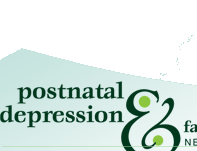 |

Paroxetine
This section is written for medical professionals.
For consumer information, see Fact sheet on paroxetine
- Paroxetine is licensed in New Zealand for treatment of depression, obsessive compulsive disorder, post-traumatic stress disorder (PTSD), generalised anxiety disorder (GAD), social anxiety disorder (SAD) or social phobia, and panic disorder +/- agoraphobia.
- Available as Aropax and Loxamine.
- Last updated: November 2010.
Summary
Paroxetine:
- The use of paroxetine in pregnancy has caused significant medical debate. This is due to many studies suggesting a diverse range in outcomes - especially with regards to the potential risk of cardiac malformations.
- It might be associated with a slight increase in congenital heart malformations if used in the first trimester, especially if the dose is > 25mg per day or if used concurrently with other SSRIs.
- It is associated with a high frequency of neonatal adaptation syndrome (NAS).
- It may be associated with an increased risk of spontaneous abortions.
- It is one of the safest antidepressant to use during breastfeeding in New Zealand.
The decision to use psychotropic medication in preganancy and breast feeding should be made weighing up the risks versus the benefits in each individual case. It should involve an informed choice between patient and clinician.
Use in Pregnancy
Category D (but there is debate over this and it may be reclassified as C)
- Many reviews (1, 2, 3, 4) have suggested that SSRIs as a class do not increase the risk of common birth defects, although individual SSRIs may confer a small increased risk of congenital cardiac malformations.
- There is ongoing debate about the incidence of cardiac malformations associated with the first trimester exposure to paroxetine (24). For this reason it is currently the least preferred SSRI in early pregnancy.
- Two papers (5, 6) found an association between first trimester exposure to paroxetine and cardiac defects (initially, this was calculated as a two-fold increase from baseline, i.e. 1% to 2%) compared to the infants exposed to other antidepressants. Most malformations were atrial or ventricular septal defects (some of them were benign and others may have required surgery). These were unpublished, non-peer reviewed studies.
- A more recent reanalysis of risk from other data adjusted the risk to 1.5% (16).
- Prior to a 2008 publication (15), the FDA’s recommendation was to consider discontinuing paroxetine for women in the first trimester of pregnancy. This could be done by either switching to another antidepressant, or stopping paroxetine during pregnancy (tapering off paroxetine by 10mg/d weekly), or stopping paroxetine between week three and eight of gestation (during cardiogenesis).
- A large study in 2008 (15) did not find an increased rate of cardiac malformations. This study included 1174 cases of first trimester paroxetine exposure from eight teratology services and 2061 cases from five previously published database studies. At that stage, the weight of evidence suggested that there was not an increased risk of cardiac malformations associated with first trimester exposure to paroxetine.
- More recent studies have suggested there may indeed be an increased risk of cardiac malformations. A prospective multi-centre controlled observational study indicated a two-fold increase in major congenital anomalies in those exposed to fluoxetine and paroxetine (18). Further, a check in the database of Quebec Pregnancies during 1998 to 2004 indicated 3% of infants exposed to paroxetine had cardiac malformations (21). Again, the study indicated the most prevalent cardiac malformations were atrial and ventricular septal defects.
- In a 2010 systemic review of antidepressants in pregnancy (29), 35 articles relating to congenital malformations were identified. Of these 12 demonstrated a significant association between antidepressant use in early pregnancy and congenital malformations but 23 did not demonstrate this association. Many studies had significant limitations.
- Given the uncertainty of whether first trimester exposure to a paroxetine is associated with cardiac malformations, concerned mothers can be offered ultrasound investigations that may be able to detect fetal cardiac problems in early pregnancy. Note careful consideration should be given to the risk of relapse in pregnant women if paroxetine is discontinued. The risk of relapse if antidepressant medication is stopped in pregnancy has been shown to be 68% compared to 26% of those who continue their medication (17).
- In a recent study (26) using a nested case-control study design with data from the Quebec Pregnancy Registrar for 5124 women, a total of 284 (5.5%) of a woman who had a spontaneous abortion had at least one prescription for an antidepressant filled during the pregnancy, as compared to 1401 (2.7%) of the matched controls (odd ratio 2.09).
- Use of antidepressants during pregnancy was associated with an increased risk of spontaneous abortion (odds ratio 1.68) after adjusting for potential cofounders. They demonstrated that paroxetine use alone or venlafaxine use alone were associated with an increased risk of spontaneous abortion (odds ratio 1.75 and 2.11 respectively).
- SSRIs as a class may increase the risk of preterm delivery, low birth weight and low apgar scores (14).
- Neonatal adaption syndrome (NAS) can occur in infants of mothers who have used SSRIs near term. Generally NAS symptoms in the newborn infant resolve spontaneously. The incidence of NAS is reported to be around 30% for SSRIs as a group (9) (19) (25). This risk appears to be higher with paroxetine, which accounts for about two thirds of cases reported to the World Health Organisation (WHO) (10). There are case reports of significant adverse outcomes, including neonatal convulsions and a subarachnoid haemorrhage (11).
- A possible increased risk of persistent pulmonary hypertension (PPH) in infants exposed to SSRIs after 20 weeks duration has been identified (7). This study did not have enough statistical power to differentiate between the SSRIs, but did identify an absolute increase in risk of 5 cases per 1,000 exposures. The clinical significance of this is uncertain.
- The potential risk to the newborn of PPH has not been confirmed by an additional study (22).
- There is a theoretical concern about long term neurobehavioural effects in infants following exposure to SSRIs in-utero. No differences were seen in infant development (compared to those that had not been exposed) during a 4-5 year follow-up (27). However a study (28) evaluating the association between antidepressant exposure (predominantly SSRIs) in-utero and achievement of developmental milestones found a near 16 day delay in ability to sit, a 29 day delay in walking and fewer could occupy themselves at 18 months of age compared to those that had not been exposed to antidepressants. It should be noted that these delays in milestones were still within normal range of development and that there were a number of confounders in the study (uncertain degree of illness severity in the mothers, lack of blinding of participants and interviewers and not all participants completing all the interviews).
Use in Lactation
Category L2
- As a rule, paroxetine is the most preferred SSRI to use during breastfeeding.
- Infant blood levels are undetectable (or less than 3% of maternal level) and no adverse events have been reported (11, 12, 23).
- One study found greater paroxetine in the later portions of breast milk (hind milk) than in earlier portions (fore milk) (13).
- A prospective cohort study following mothers taking (or not) paroxetine whilst breastfeeding, demonstrated no medication effect on infant weight gain or adverse effects over 12 months (20).
References
(1) Ericson, A., et al. Delivery outcome after the use of antidepressants in early pregnancy. Euro J Clin Pharm (1999) 55(7): 503-508.
(2) Kulin, NA., et al. Pregnancy outcome following maternal use of the new selective serotonin reuptake inhibitors: a prospective controlled multicentre study. JAMA (1998) 279(8): 609-610.
(3) Kallen, BA.; Otterblad Olausson, P. Maternal drug use in early pregnancy and infant cardiovascular defect. Reproductive Toxicology (2003) 17(3): 255-261.
(4) Einarson, TR; Einarson, A. Newer antidepressants in pregnancy and rates of major malformations: a metaanalysis of prospective comparative studies. Pharmacoepidem & Drug Safety (2005) 14(12): 823-827.
(5) GlaxoSmithKline. Epidemiology Study: updated preliminary report on Bupropion and other antidepressants including Paroxetine in pregnancy and the occurrence of cardiovascular and major congenital malformations. Unpublished.
(6) FDA Public Health Advisory. Paroxetine. Created 8 December 2005. Retrieved 5 October 2007.
(7) Chambers, C.D., et al. Selective serotonin-reuptake inhibitors and risk of persistent pulmonary hypertension of the newborn. N Eng J Med (2006) 354(6): 579-589.
(8) FDA Public Health Advisory. Treatment challenges of depression in pregnancy and the possibility of persistent pulmonary hypertension in newborns. Created 19 July 2006. Retrieved 5 October 2007.
(9) Levinson-Castiel, et al. Neonatal abstinence syndrome after in-utero exposure to selective serotonin reuptake inhibitors in term infants. Arch Ped Adol Med (2006) 160: 173-176.
(10) Sanz, FJ., et al. Selective serotonin reuptake inhibitors in pregnant women and neonatal withdrawal syndrome: a database analysis. Lancet (2005) 365(9458): 482-487.
(11) Gentile, S. The safety of newer antidepressants in pregnancy and breastfeeding. Drug Safety (2005) 28(2): 137 152.
(12) Weissman, AM., et al. Pooled analysis of antidepressant levels in lactating mothers, breast milk, and nursing infants. Am J Psych (2004) 161(6): 1066-1078.
(13) Stowe, ZN., et al. Paroxetine in human breast milk and nursing infants. Am J Psych (2000) 157(2): 185-189.
(14) Kallen, B. Neonatal characteristics after maternal use of antidepressants in late pregnancy. Arch Ped Adol Med (2004) 158(4): 312-316.
(15) Einarson, A. et al., Evaluation of the risk of congenital cardiovascular defects associated with use of Paroxetine during pregnancy. Am J Psych (2008) AIA: 1-4.
(16) Cole, J., et al. Paroxetine in the first trimester and the prevalence of congenital malformations. Pharmacoepidemiol Drug Saf (2007) 16:1075-1085.
(17) Cohen, LS., et al. Relapse of major depression during pregnancy in women who maintain or discontinue antidepressant treatment. JAMA (2006) 295(5): 499-507.
(18) Diav-Citrin, O. et al. Paroxetine and Fluoxetine in pregnancy: a prospective, multicentred, controlled, observatinal study. Br J Pharmcol (2008) 66(5): 695-705.
(19) Costei, AM., et al. Perinatal outcome following third trimester exposure to Paroxetine Arch Ped Adol Med (2002) 156: 1129-1132.
(20) Merlob, P., et al. Paroxetine during breast feeding: infant weight gain and maternal adherence to counsel. Eur J Ped (2004) 163: 135-139.
(21) Berard, O.; Sheehy, O. Paroxetine use during pregnancy and adverse pregnancy outcomes in the absence of detection bias. Eur Psych (2010) 25(Suppl 1): 1687.
(22) Andrade, SE., et al. Antidepressant medication use and the risk of persistent pulmonary hypertension of the newborn. Pharmacoepid Drug Saf (2009) 18: 246-252.
(23) Henrick, V., et al. Use of Sertraline, Paroxetine and Fluvoxamine by nursing women. B J Psych (2001) 179: 163 166.
(24) Mintzes, B.; Jureidini, J. Should Paroxetine be used to treat depression during pregnancy? Am J Psych (2008) 165(11): 1487-1488.
(25) ter Horst, P.G.J., et al. Pharmacological aspects of neonatal antidepressant withdrawal. Obstet Gynecol Survey (2008) 63(4): 267-279.
(26) Nakhai-Pour, HR., et al. Use of antidepressants during pregnancy and the risk of spontaneous abortion. CMAJ (2010) DOI: 10.1503/cmaj.091208.
(27) Rubinow D.R. Antidepressant treatment during pregnancy: between Scylla and Cahribdis. Am J Psychiatry (2006) 163: 954-956.
(28) Pedersen, L.H., et al. Fetal exposure to antidepressants and normal milestone development at 6 and 19 months of age. Pediatrics (2010) 125: e600-e608.
(29) Udechuku,A., Nguyen T., Hill R., Szego K. Antidepressants in pregnancy: a systematic review. Australian and New Zealand Journal of psychiatry (2010) 44:978-996.
|
 |






